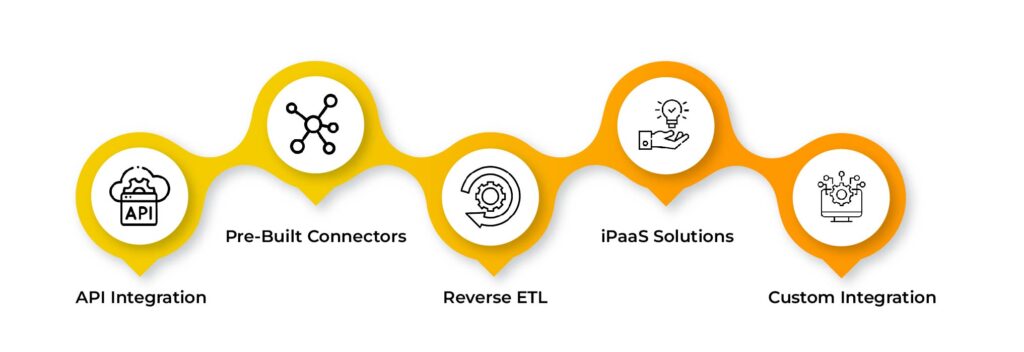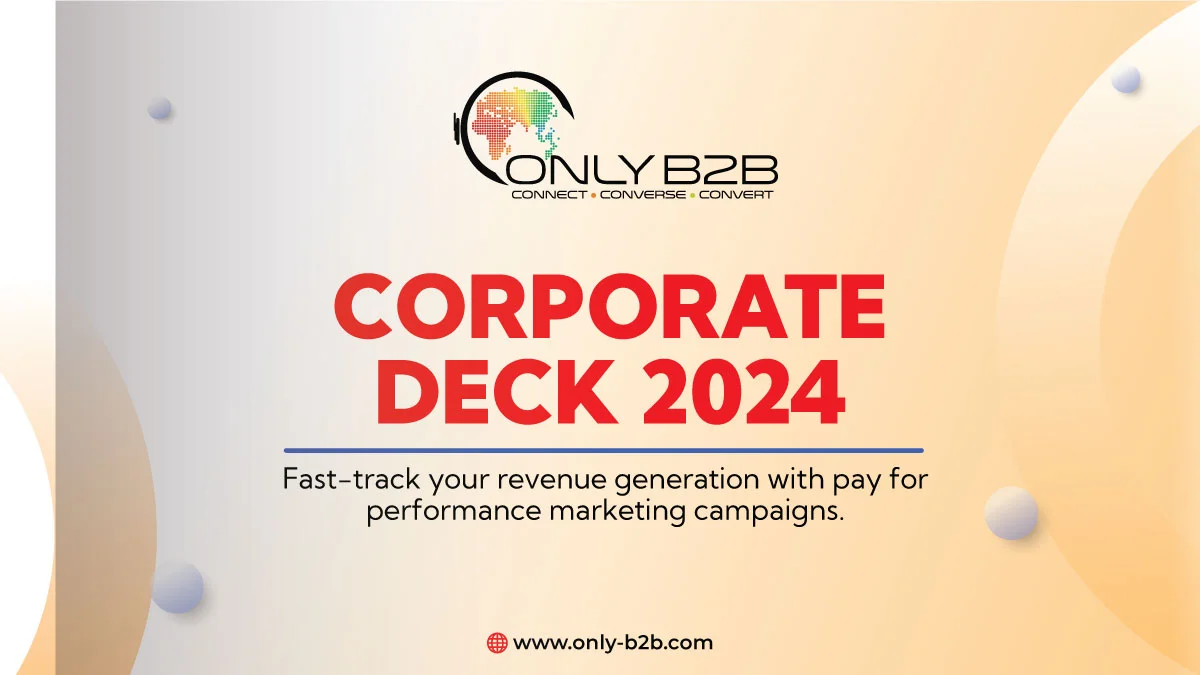
Gone are the days of B2B marketing campaigns that land with a thud!
Forget them! We’re entering a new era where personalization reigns supreme and the key to unlocking its potential lies in a powerful tool: intent data
Think of B2B intent data as the secret sauce that unlocks a deeper understanding of your prospects. It goes beyond demographics and past purchases, revealing the “why” behind their actions: their specific needs, motivations, and anxieties.
By analyzing factors like:
- Time of day
- Location
- Past interactions
- Even emotional sentiment
B2B intent data paints a rich contextual picture. This empowers you to craft personalized experiences that feel like they were made just for them. Imagine delivering content that resonates perfectly with their current situation, not just broad topics based on keywords. That’s personalization that packs a punch!
What is Intent Data, anyway? Read more:
Must Read: The Power of Intent Data in Lead Generation
Understanding Intent Data in b2b marketing
Table of Contents
- 1 Understanding Intent Data in b2b marketing
- 2 Diving Deeper: Types of Intent Signals in B2B
- 3 How to leverage Intent Signals to Tailor your Marketing Strategies
- 4 Connecting Intent Data with B2B Hyper Personalization for customized marketing strategy
- 5 Practical strategies for Aligning Intent Data with Targeted Personalization
- 6 Decoding B2B Intent Data Integration Techniques
- 7 Tools and Platforms for Effective Intent data Integration
- 8 Choosing the Right Path for Integrating Intent data
- 9 Transform your B2B sales: Customizing B2B Marketing with Intent Signals
Think of intent data as the crystal ball of B2B marketing. It goes beyond demographics and past purchases to reveal your prospects’ active interest in specific products, services, or solutions.
By analyzing online behavior (website visits, search queries, social media engagement), intent data platforms paint a picture of who’s actively considering a purchase and what type of solution they’re looking for.
If your organization is not investing in B2B intent data, then you are falling behind.
Traditional marketing data: not a good idea. It is like filling your car with the wrong fuel. Sure, it might get you moving, but it won’t take you far and could even damage your engine. Relying solely on demographics or past purchases misses the key ingredient: active buying intent.
Remember, intent data isn’t just about getting you started; it’s about getting you there efficiently and effectively.
Don’t stall your B2B marketing efforts. Use intent data to avoid the wrong fuel trap and reach your destination.
Let’s delve deep into Intent Data in Personalized B2B Marketing.
Must Read: First-Party, Second-Party, Third-Party Intent Data: Diving into Notable Differences
Diving Deeper: Types of Intent Signals in B2B
Now, intent data isn’t a one-size-fits-all solution. There are two main types to understand:
1. Explicit Intent:
This is like your prospect shouting their needs from the rooftops. Think of things like downloading white papers, requesting demos, or attending webinars related to your offerings. It’s a clear signal of active interest and purchase intent.
2. Implicit Intent:
This is where things get interesting. By analyzing browsing behavior, keyword searches, and even social media interactions, intent data platforms can infer potential interest even if prospects haven’t explicitly expressed it. It’s like reading between the lines of their digital footprint.
So, how can this magical data transform your B2B marketing?
Must Read: 10 Key Game-Changing Benefits of Intent Data
How to leverage Intent Signals to Tailor your Marketing Strategies

Here are just a few ways:
1. Laser-Targeted Campaigns:
Tailor targeted campaigns that highlight your unique value proposition and win them over before they even consider your competitors.
2. Boost Lead Quality:
Identify prospects with genuine buying intent, maximizing your ROI and saving you valuable time and resources.
3. Hyper-Personalized Content:
Use intent data to understand your audience’s specific needs and challenges, then craft targeted content that speaks directly to them.
4. Streamlined Sales Process:
Equip your sales team with valuable insights into prospects that allow them to tailor their outreach, shorten sales cycles, and close deals faster.
But wait, there’s more!
In today’s privacy-conscious world, ethical data practices are crucial. Techniques like federated learning, differential privacy, and anonymization allow you to personalize effectively without compromising sensitive information. Building trust and fostering long-term relationships? Check and check.
Want to go beyond basic personalization? Buckle up for hyper-personalization!
Must Read: How to Collect B2B Intent Data
Connecting Intent Data with B2B Hyper Personalization for customized marketing strategy
Hyper personalization takes things to the next level, tailoring experiences not just to individuals, but to micro-segments or even individual interactions.
Imagine AI dynamically adjusting content, offers, and recommendations based on real-time analysis. It’s like having a tiny marketing genie in your pocket, whispering the perfect message at the perfect moment. The technical hurdles are real, but the potential for creating truly unique and engaging experiences is mind-blowing.
And let’s not forget about data.
The more data you have, the richer your understanding of intent becomes.
Integrating multimodal data from sources like text, voice, video, and sensor data paints an even more vivid picture. No longer are you limited to just what users say – you can analyze their tone of voice, facial expressions, and even surroundings. Imagine personalizing content not just based on search terms, but on the user’s emotional state. Now that’s some next-level marketing magic!
But intent data alone isn’t the silver bullet. Remember, it’s a powerful tool that needs to be wielded strategically.
Must Read: Virtual Prospecting with Intent Data
Practical strategies for Aligning Intent Data with Targeted Personalization
Here are some key takeaways:
Match the provider to your needs:
Different providers cater to different use cases. Choose the one that aligns best with your specific marketing and sales goals.
Don’t be afraid to mix it up:
Combining data from multiple providers can give you a more comprehensive view of your audience.
Think beyond the basics:
Use intent data for pipeline acceleration, customer retention, and other areas beyond just initial outreach.
Tackle the challenges:
Identifying decision-makers within target accounts can be tricky. Develop clear strategies to overcome this hurdle.
Measure your impact:
Track how intent data investments affect your B2B revenue to see the true value they bring.
Must Read: How to Leverage Intent Data for Sales?
Decoding B2B Intent Data Integration Techniques
In the martech landscape, data reigns supreme. But while traditional data provides valuable insights, it often misses the crucial piece of the puzzle: active buying intent. Enter B2B intent data, the game-changer that reveals prospects actively researching solutions like yours.
However, unlocking its true potential requires seamless integration with your existing martech stack. Let’s explore the techniques and tools to effectively integrate intent data and supercharge your B2B marketing.
Tools and Platforms for Effective Intent data Integration

1. API Integration:
For tech-savvy marketers, direct API connections offer granular control and flexibility. However, this method requires in-house expertise and may not be the most beginner-friendly option.
2. Pre-Built Connectors:
Data transfer tools offer a faster, no-code solution. They leverage pre-built connectors to seamlessly move data between your intent data provider, MAP, CRM, or data warehouse.
3. Reverse ETL:
Ensure your intent data stays synchronized with internal systems using reverse ETL. This technique extracts data from your MAP/CRM and enriches it with insights from your intent data platform.
4. iPaaS Solutions:
If you juggle multiple applications, cloud-based integration platforms (iPaaS) can be your savior. They act as a central hub, simplifying connections and offering scalable solutions for complex martech environments.
5. Custom Integration:
Highly specific needs or intricate systems might require custom development. This option offers ultimate control but also involves building bespoke code and ongoing maintenance.
Must Read: Driving Growth with B2B Purchase Intent Data: Unlocking the Power of Buyer Insights
Choosing the Right Path for Integrating Intent data
Factors to consider when selecting your integration approach:
Technical expertise:
How comfortable are you with coding and technical configurations?
Data complexity:
Are you dealing with large datasets or intricate data schemas?
Budget:
What resources are available for initial setup and ongoing maintenance?
Future plans:
Do you anticipate expanding your martech stack or using multiple intent data providers?
Remember: Successful integration is a collaborative effort. Leverage case studies, expert guidance, and start small – scaling as you gain confidence.
Transform your B2B sales: Customizing B2B Marketing with Intent Signals
By Tailoring Content Based on Intent Insights, you’ll transform your martech stack into a powerful insight’s engine, enabling you to:
- Uncover hidden buying signals: Understand which accounts are actively researching your solutions.
- Personalize campaigns at scale: Deliver highly relevant content and offers based on individual intent.
- Optimize lead nurturing: Identify high-value prospects and prioritize outreach efforts.
- Measure campaign effectiveness: Track the impact of intent data on qualified leads and revenue.
Forget lukewarm B2B marketing! Ditch generic data, the wrong fuel for your engine. Intent data is the high-octane upgrade, revealing hot prospects actively researching your solutions.
Only B2B is like a built-in GPS, it shows you where they’re headed, letting you deliver personalized experiences that convert. Don’t stall your growth – fuel your B2B success with intent data and accelerate toward booming sales!

Vikas Bhatt is the Co-Founder of ONLY B2B, a premium B2B lead generation company that specializes in helping businesses achieve their growth objectives through targeted marketing & sales campaigns. With 10+ years of experience in the industry, Vikas has a deep understanding of the challenges faced by businesses today and has developed a unique approach to lead generation that has helped clients across a range of industries around the globe. As a thought leader in the B2B marketing community, ONLY B2B specializes in demand generation, content syndication, database services and more.


